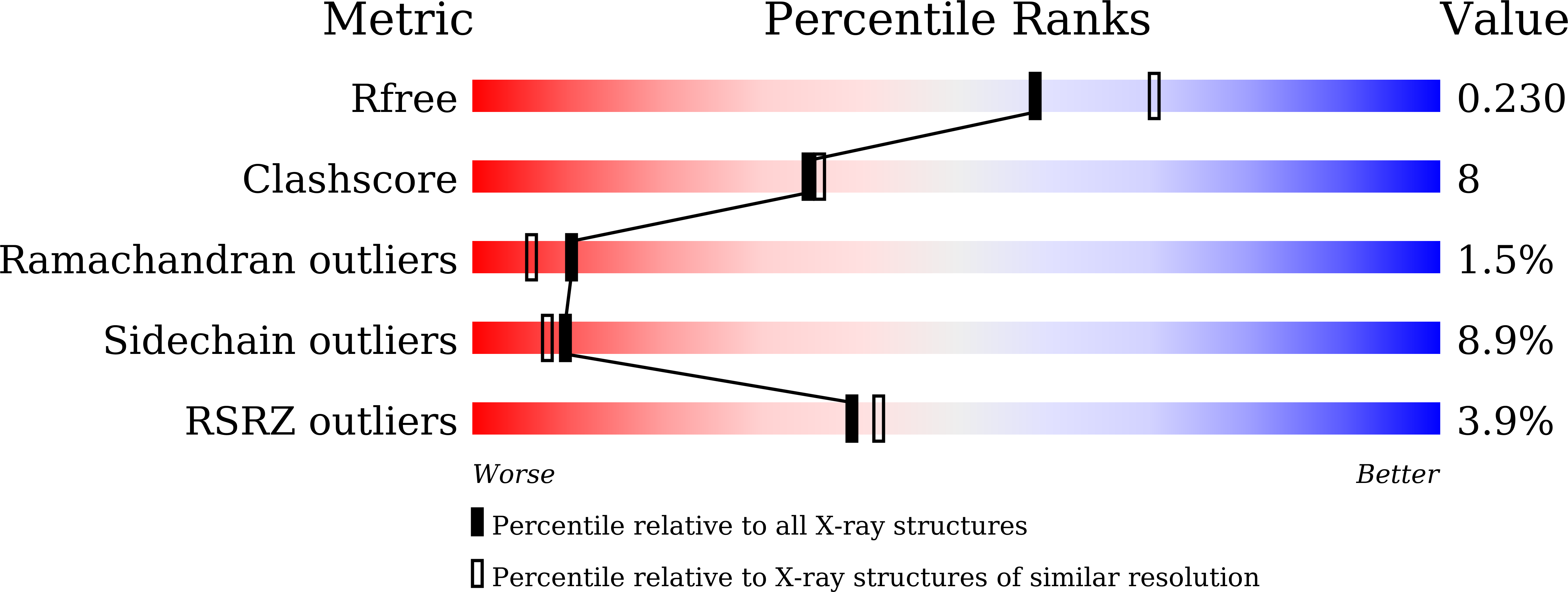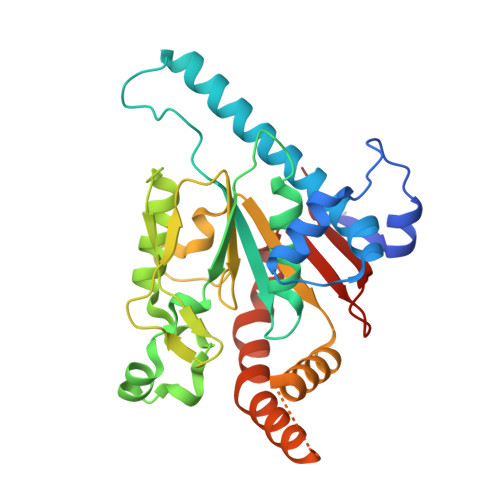Biochemical and structural studies of mutants indicate concerted movement of the dimer interface and ligand-binding region of Mycobacterium tuberculosis pantothenate kinase
Paul, A., Kumar, P., Surolia, A., Vijayan, M.(2017) Acta Crystallogr F Struct Biol Commun 73: 635-643
- PubMed: 29095158
- DOI: https://doi.org/10.1107/S2053230X17015667
- Primary Citation of Related Structures:
5XLV, 5XLW, 5XMB - PubMed Abstract:
Two point mutants and the corresponding double mutant of Mycobacterium tuberculosis pantothenate kinase have been prepared and biochemically and structurally characterized. The mutants were designed to weaken the affinity of the enzyme for the feedback inhibitor CoA. The mutants exhibit reduced activity, which can be explained in terms of their structures. The crystals of the mutants are not isomorphous to any of the previously analysed crystals of the wild-type enzyme or its complexes. The mycobacterial enzyme and its homologous Escherichia coli enzyme exhibit structural differences in their nucleotide complexes in the dimer interface and the ligand-binding region. In three of the four crystallographically independent mutant molecules the structure is similar to that in the E. coli enzyme. Although the mutants involve changes in the CoA-binding region, the dimer interface and the ligand-binding region move in a concerted manner, an observation which might be important in enzyme action. This work demonstrates that the structure of the mycobacterial enzyme can be transformed into a structure similar to that of the E. coli enzyme through minor perturbations without external influences such as those involving ligand binding.
Organizational Affiliation:
Molecular Biophysics Unit, Indian Institute of Science, Bangalore 560 012, India.


















